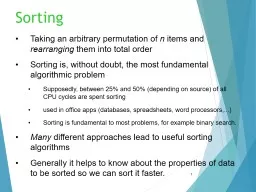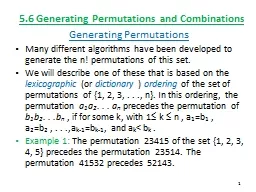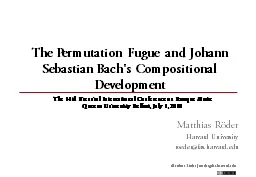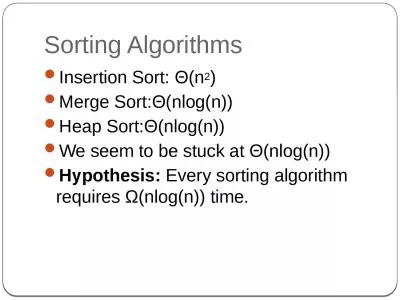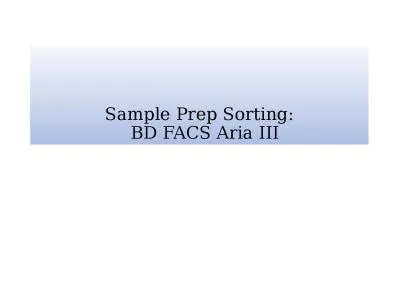PPT-Sorting 1 Taking an arbitrary permutation of
Author : giovanna-bartolotta | Published Date : 2018-11-29
n items and rearranging them into total order Sorting is without doubt the most fundamental algorithmic problem Supposedly between 25 and 50 depending on source
Presentation Embed Code
Download Presentation
Download Presentation The PPT/PDF document "Sorting 1 Taking an arbitrary permutatio..." is the property of its rightful owner. Permission is granted to download and print the materials on this website for personal, non-commercial use only, and to display it on your personal computer provided you do not modify the materials and that you retain all copyright notices contained in the materials. By downloading content from our website, you accept the terms of this agreement.
Sorting 1 Taking an arbitrary permutation of: Transcript
Download Rules Of Document
"Sorting 1 Taking an arbitrary permutation of"The content belongs to its owner. You may download and print it for personal use, without modification, and keep all copyright notices. By downloading, you agree to these terms.
Related Documents

